I wrote about my Canon SLR collection recently, mentioning that I’d like a T50.
Now, thanks to a camera swap with the very excellent Frank Lehnen, I’ve got one. (Frank got a not-very-compact Ricoh zoom compact. A nice camera… but I think I got the best end of the swap. Hope Frank doesn’t mind.)
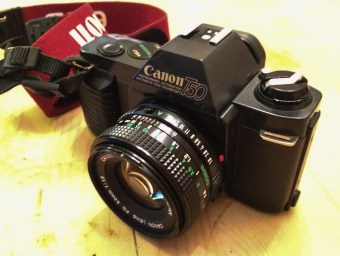
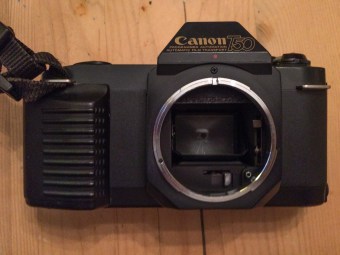
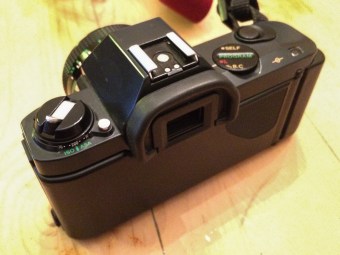
Introduced in 1983 the T50 was the first of the T series, and a brave thing it was.
Take the automation from the A series, improve the shutter (metal curtains), take all control away and wrap it up in a beautiful plastic body. Canon figured most people just want to take pictures without fussing with settings. So they gave them a maximum quality, maximum simplicity camera.
It turns out that even if they only ever use P mode, people want lots of switches and options when they buy an SLR. So it didn’t really work out for the T50. It was just too honest. The T70 is less honest and a worse camera for that.
Controls
Beyond turning it on, focusing and pressing the shutter button, there’s no control at all. It doesn’t even lock exposure on a half press. Apart from program on the top dial, there’s self timer, lock (off) and B.C (battery check). My son Hal picked the camera up, looked at the top dial and said “is that when this thing was made?”
If you have the lens’s aperture dial on anything other than A the shutter is set to 1/60th. So no aperture priority to be had there.
You set the ISO with a dial, and you could use that to shift exposure, but that would be missing the point.
Film advance is motor-driven (suck on that A series), though you have to rewind the film yourself. Hal was impressed by the nicely-engineered winding handle.
The big, bright, what-you-see-is-what-you-get viewfinder has a split image focusing screen and a P that’s on when the camera can expose the shot and flashes when it can’t.
In use
So what you get is a point, focus and shoot camera with a massive WYSIWYG viewfinder that takes Canon lenses. In other words, an amazing point and shoot camera.
As for the body, it looks good and it feels good. I love the ’80s aesthetic (think Star Wars dark side) and the proud use of good quality plastic.
It is really nice to use. Just like any other point and shoot, it’s great not think about anything other than framing the shot. No, I wouldn’t use it for portraits, landscapes, or anything where I wanted any sort of control. But as an out-and-about camera it’s lovely.
Some cameras feel right and make you want to take pictures. This is one of them. As for picture quality, that’s exactly the same as any other Canon SLR (with the same film and a comparable lens). In other words, picture quality is brilliant.
The camera’s exposure program is spookily good – it’s just a center-weighted average, but seems like it’s doing more.
You can buy these on eBay for almost nothing. Bung a 50mm 1.8 on the front and you’re away. Why wouldn’t you?
Some photos taken with the T50
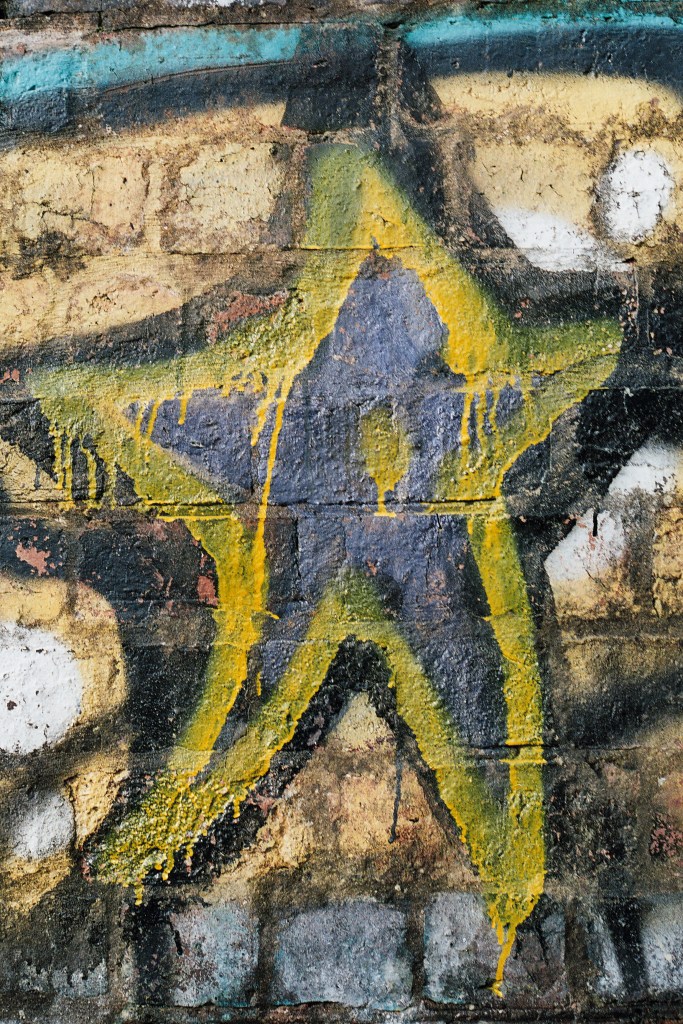
Graffiti – Canon T50, 50mm, Agfa Vista Plus 200, f no idea and speed who knows?

Old Man’s Beard – Canon T50, 50mm, Agfa Vista Plus 200, f no idea and speed who knows? Does the camera magically understand how to compensate for backlighting? Apparently yes, it does.
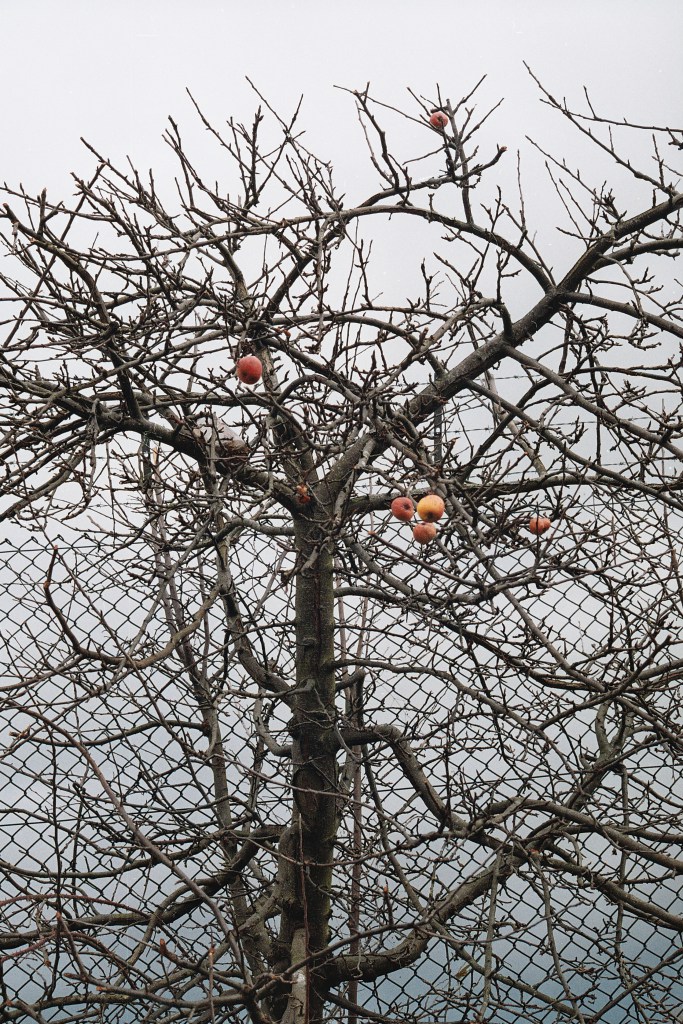
Tree – Canon T50, 50mm, Agfa Vista Plus 200, f no idea and speed who knows? Again, challenging backlighting is no problem at all for the camera’s program mode.
Resources
Canon museum page: http://global.canon/en/c-museum/product/film109.html
T50 manual (you won’t need it):http://www.butkus.org/chinon/canon/canon_t50/canon_t50.htm